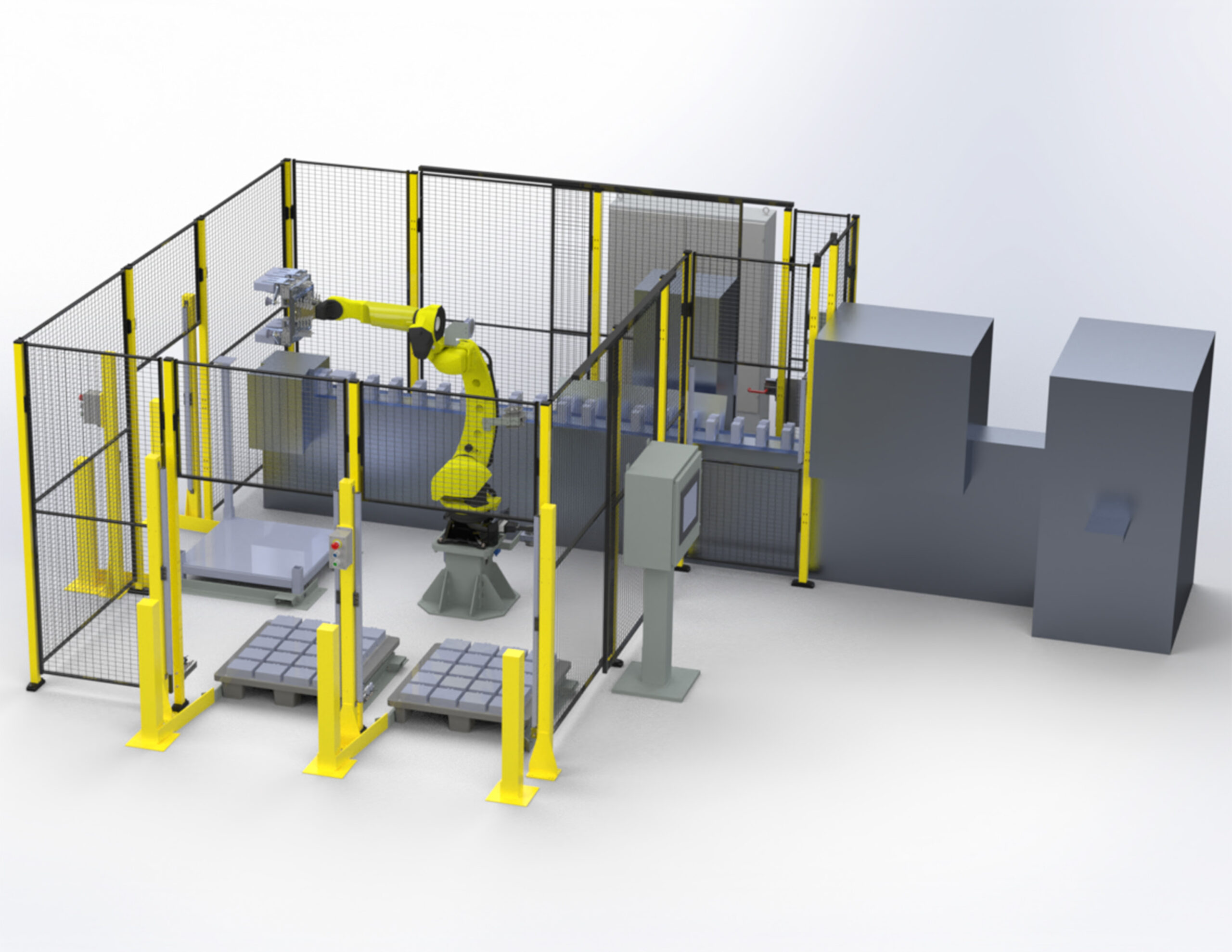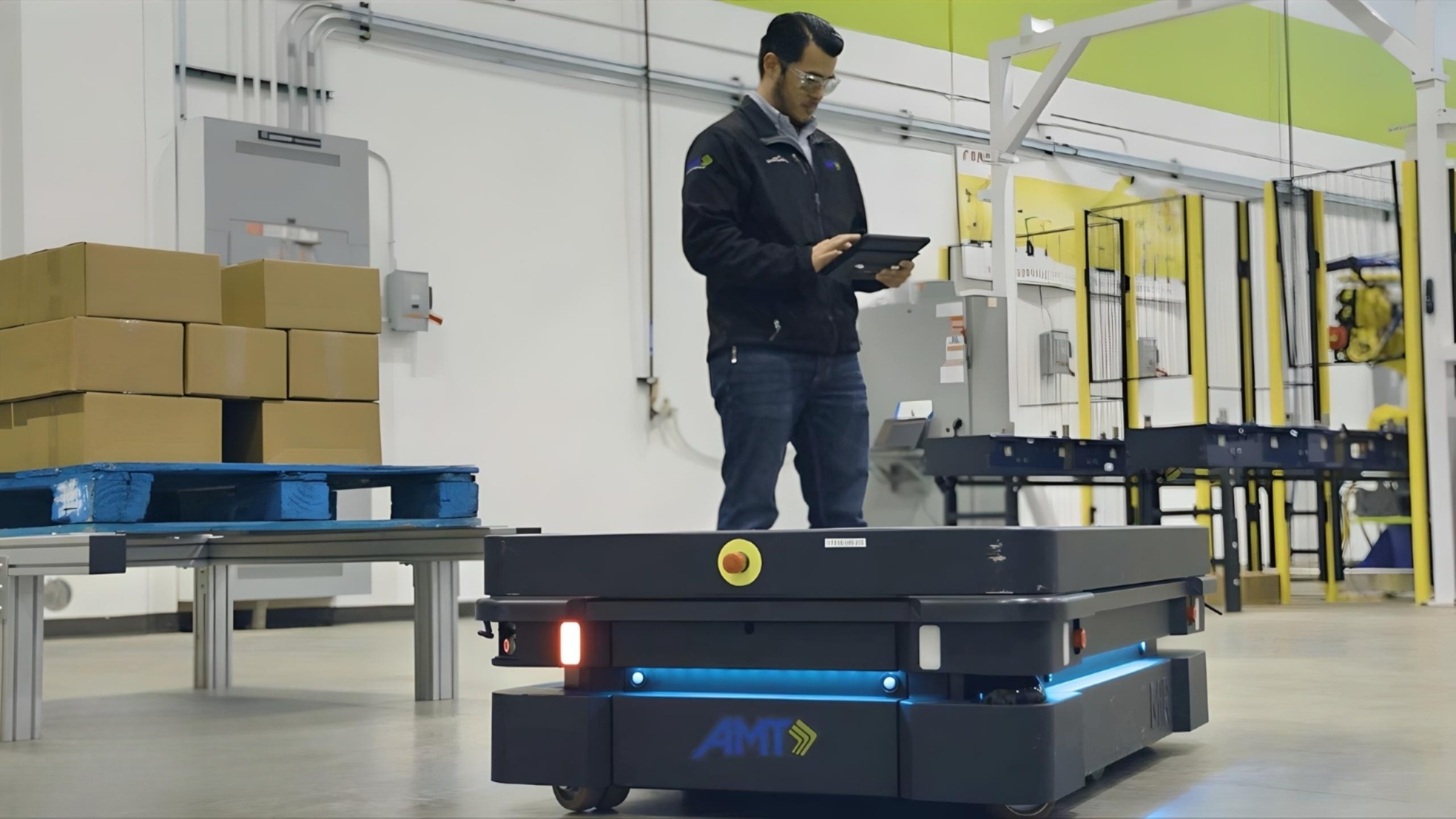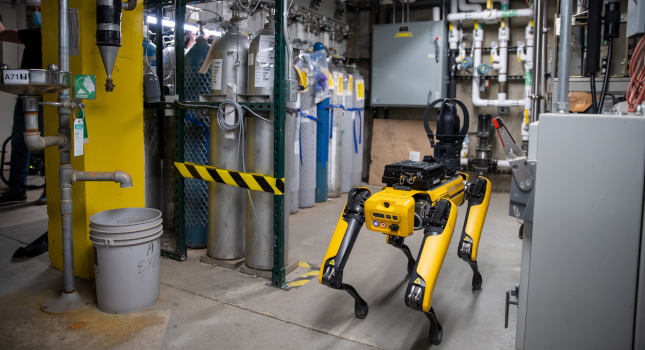An approach to remote robot monitoring and control enables integrators to tackle unplanned robot downtime with unprecedented speed, eliminating longstanding financial and technical obstacles to automation adoption. These examples showcase how robotics can make a difference.
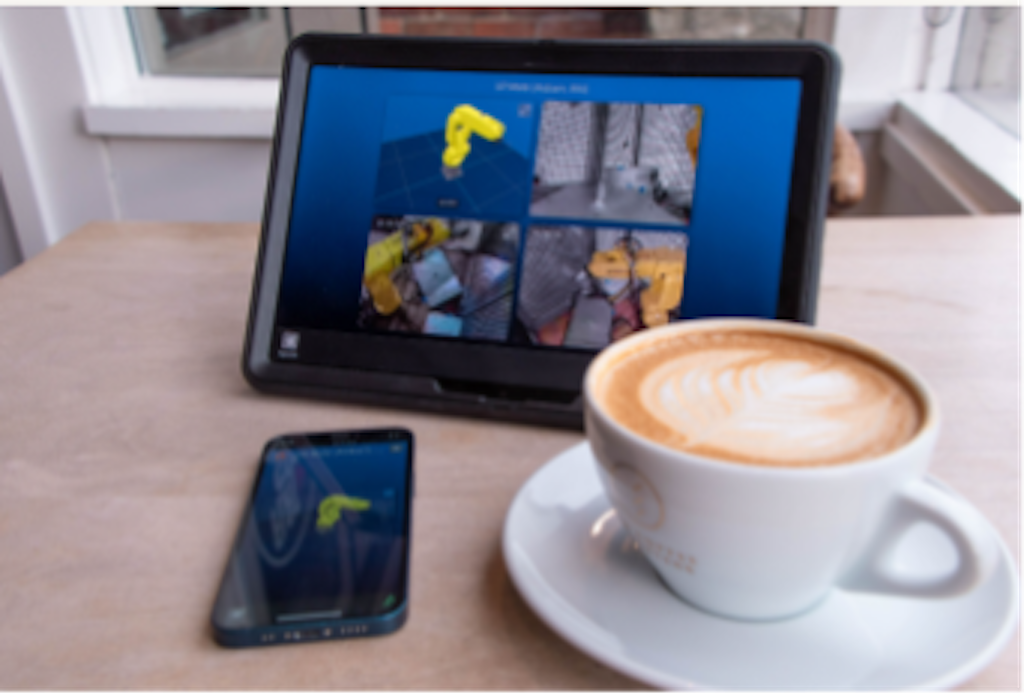
Learning Objectives
- Discover the ways in which remote robot monitoring can reduce downtime.
- Review a case study of how a remote robot monitoring system helped two organizations resolve issues without in-person visits and costly delays.
- Determine how a new approach to automation deployments enables integrators and end users to overcome limitations by combining remote diagnostics and control.
Remote robotics insights
- Remote robot monitoring systems were widely adopted during the social distancing phase of the COVID pandemic.
- Using power-over-Ethernet cameras, an Android device and the Olis app, the remote robot monitoring and control system provides 24/7 low-latency video and data access to any robot cell.
- The technology means system integrators no longer must travel long distances to troubleshoot for their customers.
In an ideal world, deploying automation would be a cinch. You identify a process that’s a great candidate for automation, reach out to a robot arm manufacturer and ask, “Do you have a robot for my application?” The manufacturer then identifies an integrator that can handle the entire process. The outcome is a turnkey solution that works 24/7 to meet return on investment.
While this idealized version of an automation deployment happens — albeit in vanishingly rare instances — we don’t live in an ideal world and the reality of deploying and managing robots is more complicated.
Whether caused by material tolerance issues, dust and dirt, process errors, artificial intelligence edge cases, human error or simple wear and tear, unexpected robot downtime is an inevitable — and potentially extremely costly — reality of running robots. This applies across all robot types and all application domains.
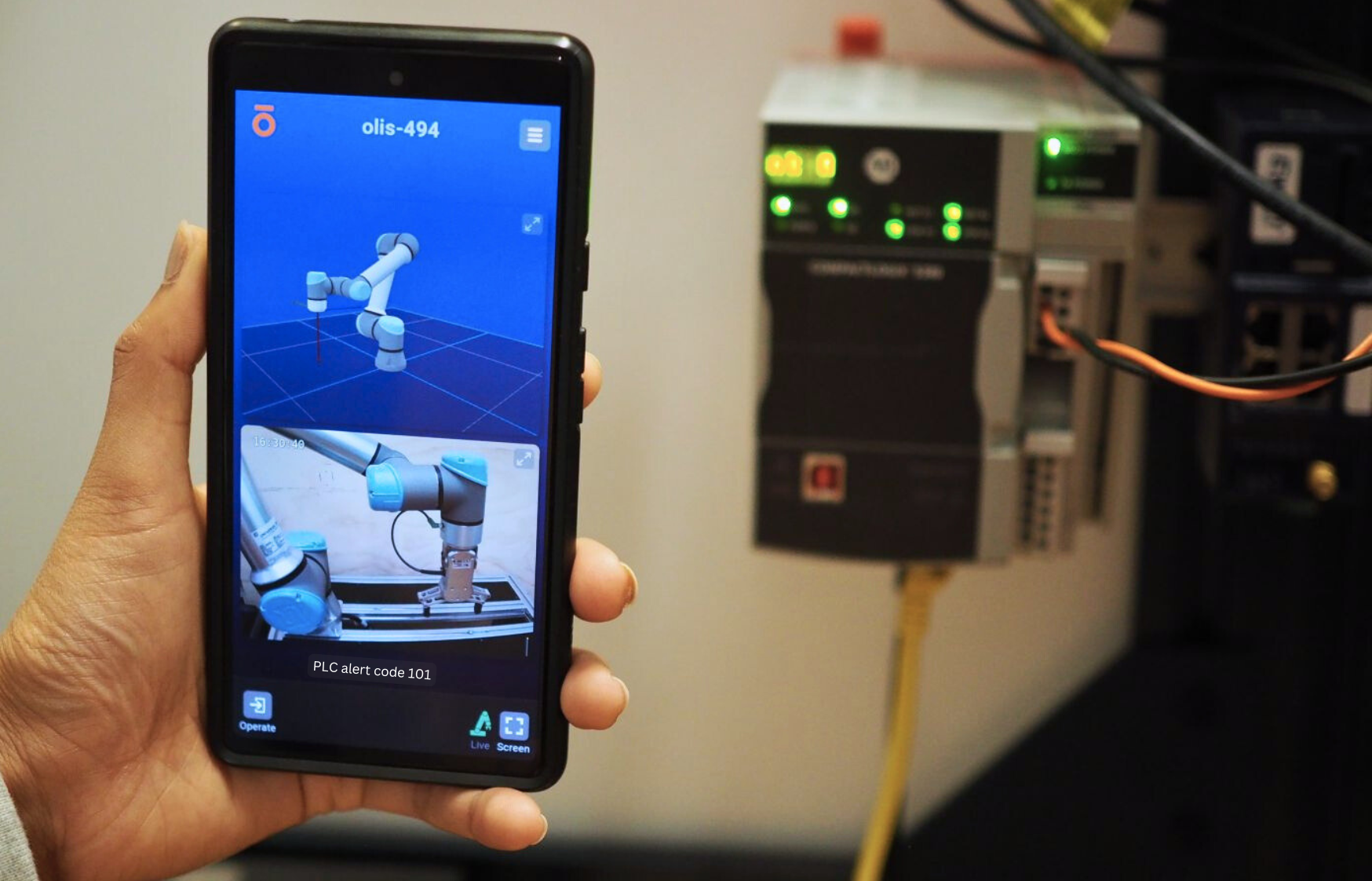
Unexpected robot downtime costs can be high. Losses can hit small businesses for $500 and an automotive supplier for $1 million or more per hour.
So, what happens when a robot cell unexpectedly comes to a stop? The most common first step is to make a panicked call to your system integrator. And the second is to wait for the integrator to travel onsite to assess the problem and devise a fix — a process that could take hours or even days. Meanwhile, the downtime clock keeps ticking and your costs keep mounting.
How robotics helped two companies
There are several ways in which a robot cell can come to an unexpected stop, according to Dillon Sego, director of engineering at CRG Automation, a Louisville, Kentucky-based firm in secondary packaging automation.
“The most common causes of unplanned downtime include a lack of consistency with incoming product, products being skewed out of position, damage to grippers and suction cups and operator error,” said Sego.
Traditionally, fixing unexpected robot downtime events would require sending CRG engineers to catch a flight to a customer facility.
“This adds to the time and cost for customers who are already frustrated because the system is down, which can lead to tough situations. And it’s reactive. You’ve got no idea how the robot faulted. And you’re trying to figure out how the fault happened when really, the only way would be if you were able to witness it happening at the time or watch it happening again,” said Sego.
Ways downtime can impact customers
Downtime is incredibly impactful to customers, said Chris Gallagher, chief sales officer at Pearson Packaging Systems, a company that has installed around 22,000 machines over the course of 70 years.
“Our systems support 24/7 operations with Fortune 500 companies who are focused on hitting quarterly revenue targets. Even with low-cost products, the expense when automation isn’t functioning at full capacity starts mounting up. Our ability to support our customers with immediate solutions is paramount to our ability to deliver better outcomes for those customers,” said Gallagher.

Traditional systems deliver limited forensic capabilities
Remote robot monitoring systems saw widespread adoption during the social distancing phase of the COVID pandemic. They solve some of the challenges around unexpected robot downtime, but not all remote robot monitoring and control solutions provide the same level of functionality.
Traditional remote monitoring systems enable companies to gain access to robotics experts quicker, thereby reducing troubleshooting costs and allowing production to restart faster.
Traditional remote troubleshooting systems are limited, however. They only provide remote monitoring, their forensic capabilities are limited and they offer no way to remotely operate the robot to fix the cause of downtime and restart the robot.
A new approach to automation deployments enables integrators and end users to overcome these limitations by combining remote diagnostics and control — of not just the robot arm but of all programmable logic controller hardware in the cell. Key to this approach is ensuring that every automation deployment incorporates an innovative new type of remote monitoring and control technology that slashes downtime costs, because it eliminates the need for boots on the ground to fix every issue that might cause your robot to come to an unexpected stop
Dubbed Olis and consisting of several power-over-Ethernet cameras, an Android device and the Olis app, the new remote robot monitoring and control system provides 24/7 low-latency video and data access to any robot cell. When secure remote access has been configured, automation can be monitored and managed remotely on any browser-capable device.
When an unexpected robot downtime event occurs, the system sends out an alert, completely avoiding the cloud — and all the cybersecurity risks associated with it — throughout the entire process. Olis also provides the video forensics required to quickly determine the cause of the failure of any of the PLC-controlled hardware in the robotics cell. It also enables remote operators to remotely correct robot errors and perform actions, such as jogging a gripper to release a part, to get production restarted.
“This technology gives you the ability to see the cause of robotic cell failure instantly, without any guesswork. You can see what happened beforehand, enabling you to quickly find the root causes and plan and execute a course of corrective action. CRG is always looking for ways to bring the most innovative technologies to our customers and Olis fits into that category,” said Sego.

How packaging robotics can solve an issue
When Pearson received a call from a customer regarding a packaging robot that had reached an unexpected configuration, chief controls engineer Shawn Cheney used Olis’s video data to quickly determine the cause.
“As soon as I saw the images, I was able to see that a robot that was designed to be ‘right-handed’ had been deployed in a ‘left-handed’ orientation. We were able to solve the issue in 30 seconds,” said Cheney.
The technology enables engineers to service more industrial robots, across a wider geographical area. It also boosts end users’ sense of security about deploying automation in the first place by lowering the barriers to adoption.
“The cost of ongoing robot maintenance and unplanned downtime and a lack of engineering personnel has been a huge barrier to adoption, especially for smaller companies with limited engineering personnel. Olis empowers these companies to deploy automation safe in the knowledge that any robot downtime can be solved quickly and effectively with minimal cost to their business,” said Sego.
This new remote robot monitoring and error correction technology is rapidly becoming the standard for automation deployments.
“In the future, all automation cells will have remote monitoring and control technology. It already seems impractical or unreasonable to even try and work in the way that we did a decade ago or even five years ago or two years ago. Technologies like Olis provide so much more information so much more quickly, enabling us to solve problems faster than before,” said Cheney.
